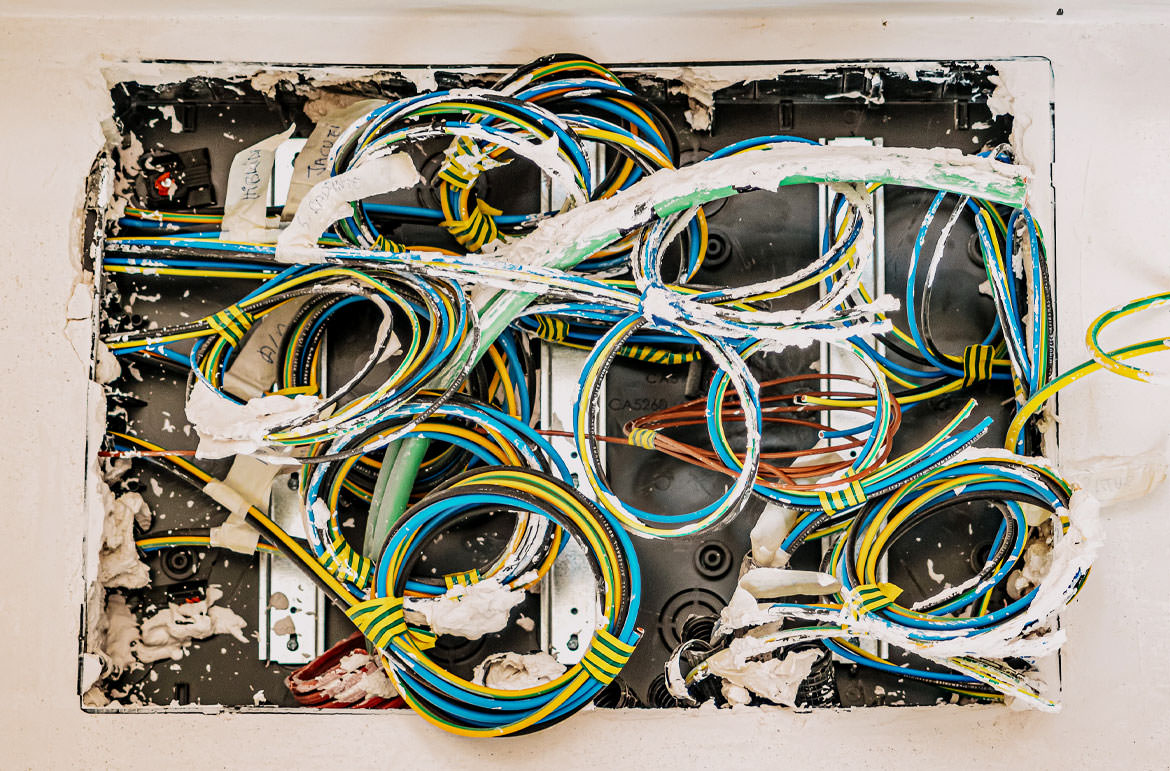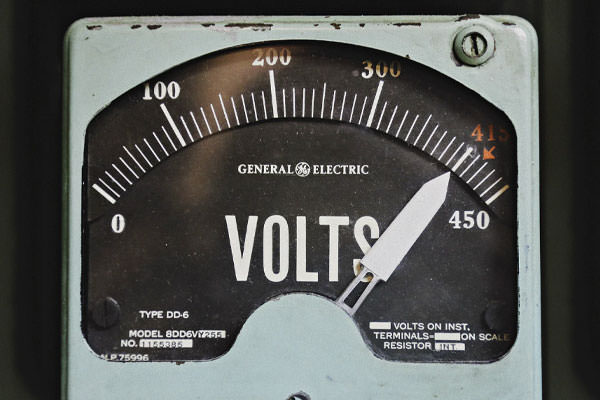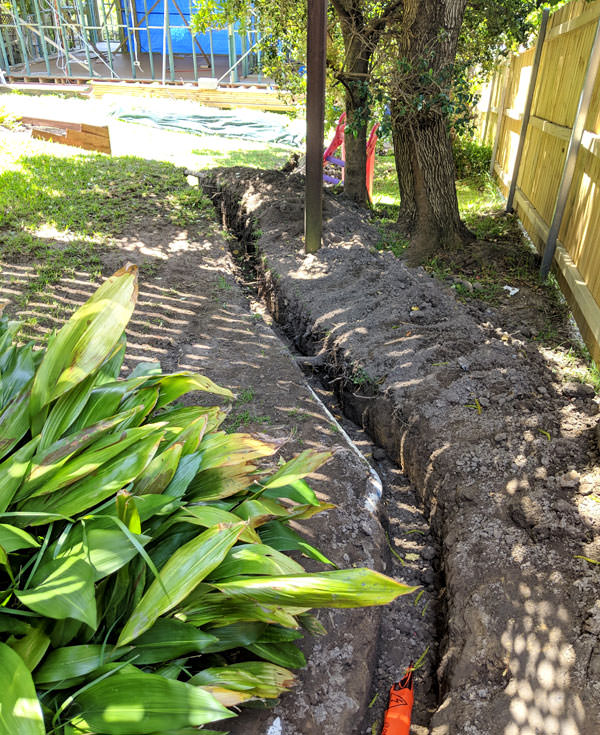
Looking for an electrician for your granny flat? And not sure if you can do any of the wiring yourself? In todays post we cover this and more.
So let’s jump right in with a question I am asked a lot:
Can you do your own granny flat wiring?
DON'T PAY A FORTUNE FOR YOUR GRANNY FLAT. Find out how to deal with council and build a granny flat for the lowest cost possible. Learn More.
No, you really shouldn’t unless you have had training and a qualification to do the work. Working with electricity is extremely dangerous. However you still can help with other parts of the work.
I cover what these parts are after a conversation with Frank Damico. A qualified electrician who has installed wiring on 1000’s of new dwellings across his 40+ year career in Australia.
Frank mentions you have to have knowledge about wiring a house, you can’t just “give it a go”. Unless you find a licensed electrician and they allow you to help them on certain tasks. This is after you have all the right insurances to keep you protected.
Apart from the obvious safety concerns; the other main issues are the insurances and liability involved. As a licensed electrician can get into a lot of trouble if they cause harm because of any work they have done or overseen.

It is best to negate risks and get professionals in
Their licence number will be attached as a permanent record of work carried out. And any complaints made against them will be listed on the Department of Fair Trading.
Visits on site for your Granny Flat electrician
I asked Frank, when an electrician comes on site to do the granny flat wiring, how many visits do you need to make for everything to be completed?
He mentioned, in general it requires 3 visits:
1. One visit to install the wiring through the frame of the granny flat
2. The second visit for all the cut outs of the lights, power points and switches
3. The third visit should just be a fit off of everything and power up! (final testing)
Frank mentions the second visit is vital for the cut-outs because what happens when you’re doing granny flats, if you don’t do the cut outs, wires get damaged and lost behind the plaster walls. You don’t know where they are.
For example a tiler comes in, tiles over switches, power points, especially in the kitchens, bathrooms. Hence the importance of multiple visits to prevent doing work over again.
Frank mentions he used to contract to a large building company that built 1000+ homes a year.
The most common issue is project management gone wrong. He would come in when he was told to (scheduled work for the electrician) and the gyprockers would have plastered walls already, and prevented him from doing what needed to be done first.
That is the greatest benefit of building a granny flat yourself, not 10+ at once like many building companies may have planned. You will know when trades need to finish their work before the next tradesperson should come in.
The cost for a Granny Flat electrician
Frank mentions there’s a couple of ways electricians quote for the work they will do.
You can quote so much per “points”. For instance; Say you’ve got 15 lights to install, you might want to charge $50 a light, that’s $750. If you’re going to supply the light and fit it, it could be another $40+ per light. Depends on what type of light you buy. Electrician’s will also work out all their extra material costs and add their hourly rate on top of that.
And then in the third fitting-off visit, the same way of pricing the job carries over. Adding any more materials needed; such as your switches, your power points, switchboards, safety switches. Plus time to test everything and ensure it is ready to hand over to the next trade.
Then there is the simple way to pay for an electrician. They give you a standard hourly rate where the owner will supply all the materials.
NOTE: Not all electricians will be ok with this, as there are specific materials that most people don’t know they need.
The good news is that for a new build you can easily get a fixed price for the work done by local electricians.

In my own case, I had the ditch dug for the electrical connection. This saved money off the quote.
In fact, renovating a house or re-wiring a property can be a lot more expensive. With a new build there are no “surprises” for electricians. With a renovation, there are always things that pop up and add to the bottom line.
Should you buy your own lights, fittings and fixtures?
Frank mentions he prefers the owners to buy them because they get what they want.
But if it’s just down lights, you’re better off letting the electrician do it because they’ll pick the down light that suits you best. The down lights these days are quite advanced in their LED technology because most of them now have three switches in the back.
One’s warm white, you have cool white and day white. So, you can take your pick. And before you actually fitting them in, you can have a look at the brightness of it and you say, “Yeah, I like the warm white”. It is as simple as setting that switch for them all.
What should people avoid when buying their own fixtures
Funnily enough Frank mentions he has seen some terrible lights purchased online. Try not to buy things from the internet. If you stick to lighting places, Beacon Lighting, trustworthy places you can’t really go wrong. Especially with products that have a warranty with them.
Unfortunately, over his career he has said this too many times:
“This is from overseas and you can’t connect up a light made for 120 volts”
So what is the worst that can happen if you buy something questionable online? Well, it can catch fire!
How to find honest electricians
How do you even know how to pick a good electrician?
What should you look out for and what are the basic things that you might ask them?
Well, a lot of people probably look in the local paper. There is nothing wrong with this. Then when you start a conversation with them, be sure to ask them how many granny flats they have completed before.
If you are uncomfortable with the limited work they have done, just move on to another electrician.
Once you are happy with the experience of an electrician you want to work with, then ask them for a few references of local work they have done.
And get in touch with other granny flat owners. Ask them what they thought of the electrician’s work. When you go ahead with the work, ensure that the electrician fills out a “NOI” (Notification of Intention of Electrical Work).
This is your record along with the electricians licence number attached to the work that was carried out. Be sure to keep this document safe as a record of all electrical work carried out.
Options for getting power to the Granny Flat
There are simply two ways to get power to your granny flat:
• The majority is underground but if this isn’t possible
• The other option’s overhead.
Frank mentions underground is by far more preferable, as to go overhead it will cost more.
You need to install a specific electricity pole and add in more materials and labour to get the power to the secondary dwelling. Plus, you can also save on costs with the electrician by being able to dig your own ditches. Which is something I had done myself before the electrician came on site for the first visit in fact.
Frank also mentioned, that a consideration that homeowners miss is that you can only run your own electrical cables across your own land. So, if you absolutely must run the electricity overhead it cannot under any circumstances run across anyone else’s land at all.
For instance, maybe the driveway might be a common ground between you and your neighbour, so you might be able to come along the side of the driveway but you can’t go through someone’s house.
Because if something happened to that house and it caught fire, the power might be cut off or damaged, then there are big problems that can evolve from something like that. And you don’t want to end up in court.
Communication cables – Phone + Internet
When installing the cables to run the power to the granny flat, you want to make sure you are also running the cables for data and it is also possible to run the antenna cable from the main house to the granny flat as well. This is for TV reception.
Do you need a separate electricity meter for a Granny Flat?
You don’t, but it’s up to the owner if they want to put it in or not.
I asked Frank: “Is there another way to be able to charge tenants if you don’t have a meter in there?”
Frank mentions with granny flats he has wired up there are two common ways to charge for electricity:
1. You can simply agree on a price to be added in the rent every week.
2. You show the tenant how much they used based on a separate meter.
Completely up to the owner, how they want to work out a charge for power.
Level 2 electrician for your Granny Flat – Do you need one?
A level 2 electrician has further qualifications and are needed if you require to connect your street pole (mains power) to your house.
Sometimes this needs to be done, if the original cable is not the right ‘thickness’ for the added power you need to run your home and granny flat together.
Especially if you and the tenants in the granny flat, are both cooking on the stove and both running an air conditioner!
In some cases, this can be drawing a lot of power, perhaps more than the original cable to the primary dwelling is designed for.
If the cable to the home is fine and you might just need a new electrical box, with new meters. In this case a regular electrician can fit that for you.
How to save on your quote and make an electricians life easier
Frank mentions that the clearer a person is, the easier it is to quote and do the work.
What makes it easier is if you already have an idea of what you want. Not just have the electrician turn up and you say: “Right, what do you think?”
The electrician will say; “Well we’ll put a power point here…” and the home owner will say; “Oh, but I’m going to put my lounge there.” Next thing you know the electrician’s spent two hours with you in complete frustration. In in most cases that means for a quote higher than anticipated as the electrician has an idea of how this work will play out, from the first on-site quote visit.
What an electrician loves to hear is:
“Look, this is what I want. I want 20 lights, I want two in the bedroom, I want a fan in the middle. I want six in the dining room and four there. And I want 12 power points, and here is where they need to go”.
Having them marked on the frame is just perfect. Along with them marked on the granny flat plans as well. Make it easier for the trades to get in and out and the whole building will run a lot smoother.
Raised piers or a concrete foundation – which is easier for the electrician?
It doesn’t really make any difference but on piers, it helps for later work that you might want carried out. If you want to add extra power points you can do it from underneath which is much easier.
If the granny flat is built on a concrete slab and you want extra power points after everything is completed you have to try and come from the top all the way down.
It’s very hard sometimes to get wires down because of timber works, insulation, there might be ducts in the way for air conditioning etc… It’s just a lot harder. In the beginning it’s not that much of a difference but later on it does make a difference.
Regulations that electricians in Australia need to stick to
I asked Frank;
“Where can people see the regulations that electricians need to stick to in Australia? Is there some governing body or some website or something like that?” It all boils down to the AS/NZS 3000. Which are the standards for which all electrical work needs to be completed to.
If you click on the link above you can find the rules on cabling, installation and everything else in between. It also includes rules and might give you an example of how to protect your cable from mechanical damage and how to prevent any unforeseen issues.
What can go wrong with an electrician?
Frank mentions inexperience is mostly what can go wrong. I thought it great to include a story he shared with me.
“Two weeks ago, I was at my nephew’s doing some work, fitting off for this so-called electrician who worked in the mines but he had no idea what to do in a domestic situation. So he’d done a lot of things that were wrong and thought they were right. As all the walls were already gyprocked, it made it a nightmare to fix later on. So here I am spending two days trying to fix things up.
So, what did the previous electrician do wrong?
It was the way the wiring was completed. Even the TV cable, they call it a “daisy chain” so you jump from one TV point to another TV point to another TV point. So if you got five points in a home, the way you normally do this, you connect to one TV point and you take the cable and you put a splitter on it. And you can juggle the lines around. But once you’ve only got one single chain, if one goes out, they all do.
The work was carried out like an old-fashioned Christmas light chain. When one goes off the whole thing fails. Frank mentions there are a few things like this which can go wrong, and inevitably it comes down to lack of experience.
Hence the importance to weed out inexperience when you ask the electrician how many granny flats they have wired from beginning to end in the first place.
Conclusion
I hope this post helps steer you in the right direction when it comes to wiring up your granny flat.
Ensure that experience is at the top of your priority list when hiring an electrician.
Make life easier for them with a clear indication of the exact work to be done and ask if you can lend a hand digging ditches or being an on-site labourer helping with tasks that don’t pose any threat.
If you want to find out more about DIY Granny flats to save yourself money head over to the homepage and find out more.









